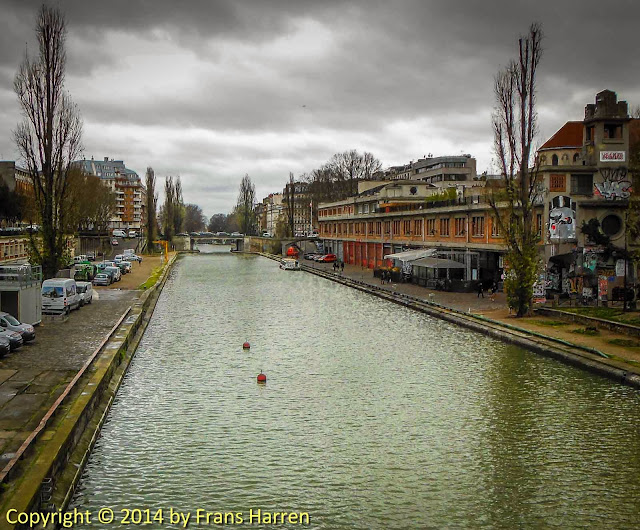
Canal Saint-Martin
The Canal Saint-Martin is a 4.5 km long canal in Paris. It connects the Canal de l'Ourcq to the river Seine and runs underground between Bastille and République.
History
Construction of the canal was ordered by Napoleon I in 1802, in order to create an artificial waterway for supplying Paris with fresh water to support a growing population and to help avoid diseases such as dysentery and cholera.
Gaspard de Chabrol, prefect of Paris, proposed building a canal from the Ourcq River (starting 100 km northeast of Paris). The canal was dug from 1802 to 1825, funded by a new tax on wine. The canal was also used to supply Paris with food (grain), building materials, and other goods, carried on canal boats. Two ports were created in Paris on the canal to unload the boats: the Port de l'Arsenal and the Bassin de la Villette.
By the 1960s, traffic had dwindled to a trickle and the canal narrowly escaped being filled in and paved over for a highway. Today, the canal is covered for a portion of its life: from Rue du Faubourg du Temple to the Place de la Bastille.
See: Wikipedia











0 comments:
Post a Comment